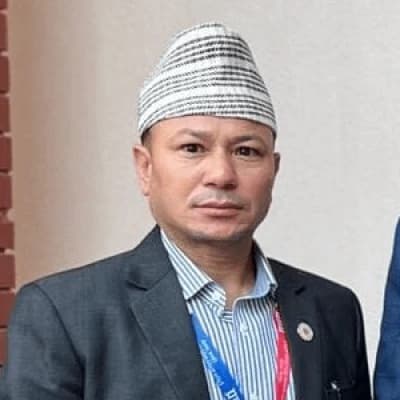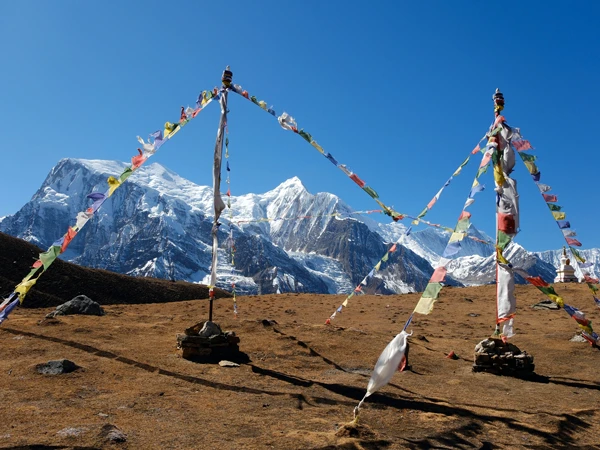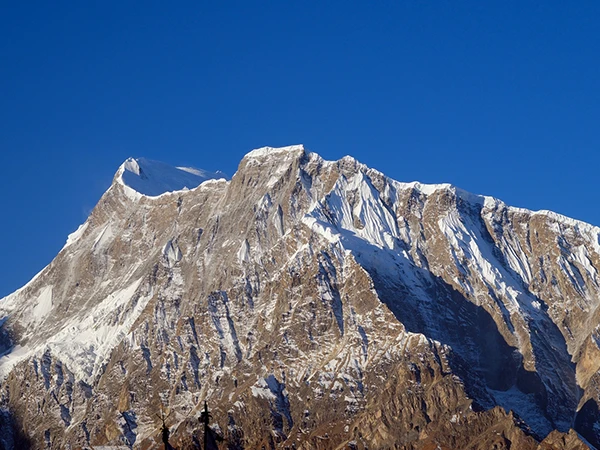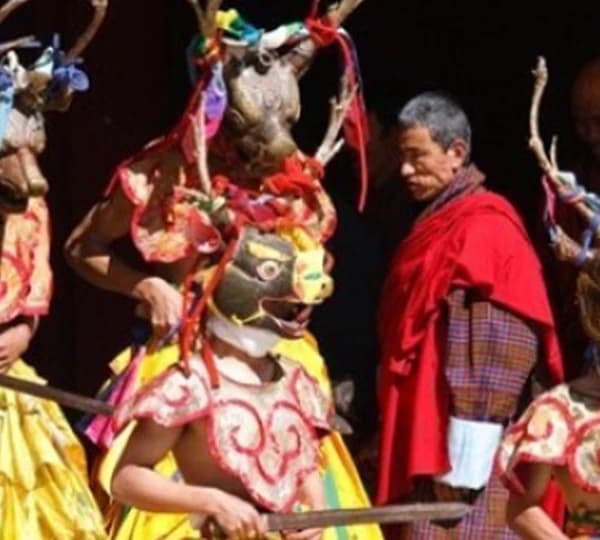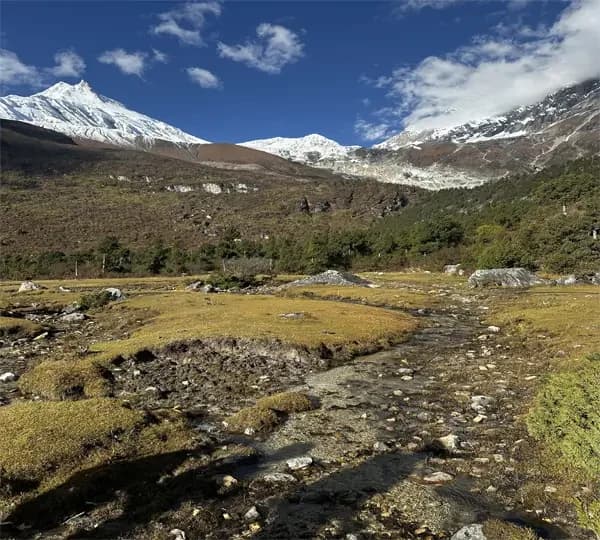Where is the Annapurna Circuit trek?
Annapurna Circuit Trek lies about 160 km west of Kathmandu. This is the most popular and well-facilitated trek in terms of landscapes and culture. You will have a lifetime of experience in the Himalayas. There are possibilities to make the trek from 4 days to 25 days. Annapurna Base Camp and Ghorepani Poon Hill are other popular treks in the Annapurna region. ACT is easier and has fewer tourists compared to Everest Base Camp Trek. Nowadays, you can combine Manaslu Circuit Trekking with Annapurna Circuit.
Price from
US$699
US$1050
New Trail Experience
The highlight of the Annapurna circuit trail:
- Complete 160 km–230 km In 12 to 16 days.
- Cultural diversity and village trails
- Crossing (Throng-la 5,416 m)
- The number of trekking days can be customized
- Magnificent Mountain view from all the spot
- The Annapurna circuits trek intersects with the Manaslu trek and Upper Mustang trek
- Hot springs in several places.
- The highest point of the Annapurna trek
The Annapurna Circuit trek starts from Beshisahar (800 m) and goes up to Manang and Throngla (5,416 m) after spending a night at the high camp, or Phedi.
Annapurna Circuit Trek accommodation:
Annapurna Circuit Trek is a popular trek and people are well concerned about tourism. So most of the places have well-maintained guest houses, ranging from attached bathrooms to dormitory rooms that are available en route.

Annapurna Trek Food:
A vital (and delectable!) aspect of the Annapurna Circuit Trek is the food. Particularly at lower elevations, the teahouses where you will be staying provide surprisingly varied menus. Options become more straightforward as you go up, and because of the distance, prices go up a little.
Here are some Items;
Main Meals:
- Dal Bhat (The Trekker’s Fuel)
- Staple Nepali meal: rice, lentil soup, curried vegetables, pickles
- Unlimited refills in most teahouses!
- Every place has a slight variation
Noodles:
- Fried noodles with veggies, egg, or chicken
- Instant noodle soups (more common at high altitudes)
- Pasta & Spaghetti
- Tomato, cheese, or garlic sauce versions
- Often simple but filling
Potato Dishes:
- Boiled, fried, mashed, or curried
- Popular at higher altitudes (easier to cook and digest)
Pizza
- Available in lower villages like Manang or Chame
- Tibetan-style or basic cheese/tomato pizzas
Momos (Nepali Dumplings):
- Steamed or fried
- Filled with vegetables, cheese, or meat
Breakfast Options:
- Pancakes – Apple, banana, chocolate, or plain
- Tibetan Bread – Fried, doughy bread (great with honey or jam)
- Porridge – Plain, apple, or cinnamon
- Eggs – Boiled, fried, scrambled, or omelets
- Toast & Jam / Peanut Butter
Drinks:
- Milk Tea / Masala Chai
- Black Tea / Lemon Tea / Ginger Tea
- Coffee – Instant in most places, but real espresso in some towns (like Manang)
- Hot lemon honey ginger – Great for altitude and cold
- Yak butter tea – Traditional Tibetan-style tea (try at least once!)
Snacks & Extras:
- Chocolate bars (Snickers, Mars, etc.)
- Biscuits / Cookies
- Popcorn – Surprisingly popular!
- Boiled eggs
- Apple pie or chocolate cake – Found in larger villages like Manang and Pisang
Note on Meat:
- Avoid meat above Chame or Manang – no refrigeration; meat is carried up without proper cold storage.
- Stick to vegetarian options higher up to avoid food poisoning.
Annapurna Circuit Trek Maps:
There are several maps of the markets on different scales. However, Global Adventure Trekking experts produce the finest map of Annapurna,
Shall I buy online or directly with a local company?
There are several outbound trekking companies in the world. But in my personal opinion, buying with local experts is much cheaper and more convenient for all clients. If you buy any tours or treks with an outbound company, you may not get the value of your money. So buying with a local company will surely deliver the value of the money you paid for. Are you ready for booking, Please go here!
Best time to go for the Annapurna trek:
Even though “Nepal is for all-season ”Due to the large diversity of the Annapurna region and altitude variation, It is difficult to predict the best time but in general practice, spring (March to May) and Autumn (September to December) are the best time of the year for Throngla pass trekking. Winter (January and February) is too cold. The lodges from Manang to Muktinath and Throng-la Pass will be closed. Monsoon season (Jun.–August) is okay for the trek, even though it is rainy season.
What are the necessary permits for the Annapurna Circuit Trek?
Yes, these two permits are required for your Annapurna Circuit Trek.
TIMS-Card (Trekkers Information Management System Card) is meant to help protect trekkers through registration checkpoints along the trek. Fees also go towards guide and porter insurance along with their training.

An Annapurna Conservation Area (ACAP) covers all of the Annapurna conservation area. An ACAP Permit, The permit is only valid for one entry and one exit.

Annapurna Circuit Trek Suggested Gear List:
Head:
- Trekking Hat/Cap
- Headlamp/Flashlight (with extra batteries), good quality
- Sunglasses (UV protection)
- Woolen hat /Beanie (for cold weather)
- Bandana/Buff (for dust and sun protection)
- Sunblock (Sunscreen) (SPF 40 or higher)
- Insect Repellent (any trekking areas)
Body:
- Base Layer Shirt: Two (moisture-wicking, breathable fabric)
- Trekking Jacket: A pair of lightweight (water-resistant/windproof)
- Insulating Layer: A pair (fleece, down jacket, or sweater for warmth)
- Rain Jacket/poncho (lightweight, waterproof)
- Trekking Trousers/Pants: Two pairs (comfortable and durable)
- Long-sleeve shirt: 1 pair (for sun or insect protection)
- Underwear: Two pairs (moisture-wicking, quick-dry fabric)
- Compression Garments (for reducing muscle fatigue, optional)
- Gore-Tex or a similar waterproof jacket
Lower Body:
- Trekking Pants: Two pairs (convertible into shorts if needed)
- Thermal Leggings: one (for cold weather)
- Shorts: Two (optional, for warmer weather)
- Knee Guards/Support (for those who need extra knee protection)
- Hands: Protect your hands with warm gloves
- Light inner gloves (for lower-elevation trekking)
- Insulated or down gloves (high-altitude trekking)
- Waterproof gloves (wet season)
Footwear:
- Trekking Boots/Shoes (comfortable, waterproof, with good grip and ankle support)
- Gaiters (to protect from mud, snow, or rocks entering boots)
- Thick Socks: Two pairs (merino wool or synthetic, moisture-wicking)
- Lightweight Socks: Two pairs (for warmer weather or layering)
- Sandals/Flip-flops (for campsite/rest stops)
Extra Suggested Items:
- Sleeping bag
- Drying towel
- Trekking Poles
- Cash (extra Nepali rupees for additional expenses)
- 60L+ Backpack (Rucksack) (with rain cover and hydration system)
- Hydration System/Water Bottles/Camelback
- Water Purification Tablets/Filter
- Snacks (Energy Bars, Dried Fruits, Nuts
- First Aid Kit (with basics like bandages and antiseptic, as per personal need)
- Multi-tool/Knife
- Trekking Map or GPS
- Portable Power Bank (to charge devices)
- Camera or Smartphone (to capture the views)
- Toiletries (toothbrush, toothpaste, biodegradable soap, shampoo, etc.) Feminine hygiene products as needed
- Wet wipes
- Emergency Whistle
- Dry bags
- Clothing Layer
- Duct Tape
- Hand sanitizer
- Fire-starting Kit (matches, lighters)
- Plastic Bags for Waste (Leave no trace principle)
- Notebook/Journal (for documenting the trip)
short
 Annapurna Circuit Trek meets Kaligandaki Valley after the Throng-La Pass (5,416 m). After steep descents to Muktinath, many people visit the temple and monastery around the area to worship. To hide the crowd on the way to Marpha, I suggest you trek via Lupra village. This is the only existing Bon village in the Annapurna region.
Annapurna Circuit Trek meets Kaligandaki Valley after the Throng-La Pass (5,416 m). After steep descents to Muktinath, many people visit the temple and monastery around the area to worship. To hide the crowd on the way to Marpha, I suggest you trek via Lupra village. This is the only existing Bon village in the Annapurna region.
